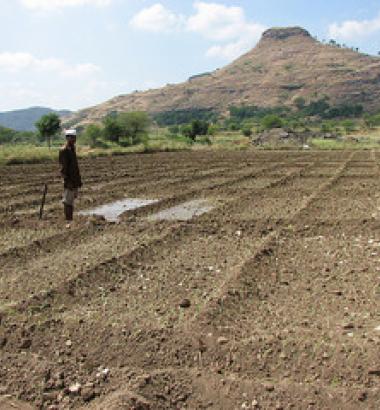Once one of the world’s most heavily regulated and protectionist economies, India underwent an economic transformation in 1991 under the careful watch of finance minister Manmohan Singh, now the prime minister. It lifted tariff and nontariff barriers on trade, abolished restrictions on foreign investment, gave up price controls and industry licensing requirements, and reprivatized state banks. Its gross domestic product has seen the benefits of liberalization, growing at an annual rate of as much as nine percent in recent years.
Yet to say that the progress has not been enjoyed by all is an understatement. While a portion of Indians are educated and able to capitalize on globalization, there is still a “huge mass of undereducated people who are making a living in low-productivity jobs in the informal sector,” write University of British Columbia economist Ashok Kotwal and his coauthors.
Manufacturing, which has created plentiful jobs for low-skilled workers in China and other fast-growing Asian countries, has not been the primary economic driver in India. Employment in manufacturing grew from 32 million in 1983 to 42 million in 2004–05—not much in a land of more than one billion people. And the vast majority of factory workers are employed in small family enterprises with 10 or fewer staff. Their small size, along with persistent corruption, poor infrastructure, and a lack of credit, has made it difficult for these businesses to take advantage of India’s new opportunities.
Instead, the service sector has been the economic hot spot. India’s large pool of English-fluent university graduates and the advent of the digital revolution have combined to make the country an attractive outsourcing location for American and European companies, particularly in the high-tech arena. Annual revenue from India’s software and services exports grew from $745 million to $24 billion in the 10 years after 1995.
But the majority of Indians—59 percent—still toil on farms. They’re moving to higher wage-endeavors slowly. While the number of workers employed in agriculture sank by 22 percentage points in China and Thailand from 1980 to 2000, it only dropped nine points in India.
The segment of the population living in poverty also remains large. More than 80 percent of India’s population lives on $2.16 a day or even less—about the same proportion as in 1983. (The official poverty rate is $1.08 per day.) Outside elite circles, levels of literacy and educational achievement are unimpressive: Only in 2004 did India meet or surpass benchmarks that China reached nearly 25 years earlier.
India will not be able to follow the standard Asian development model, the authors argue. To improve the lives of its people, the country must make its farms more productive. To do so, it needs to cultivate institutions that can boost technical skills, agricultural innovation, and access to credit. It is woefully deficient in roads and other basic infrastructure. “India’s future will depend a great deal on how these institutional improvements shape up,” the authors conclude.

